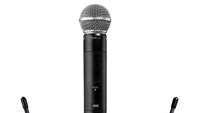Media Access Project challenges wireless microphones

The Media Access Project (MAP), a consumer advocacy group, has filed an official complaint with the FCC against wireless microphone manufacturers, arguing that the vendors have induced customers to buy microphones they are not legally authorized to use.
The complaint was filed on behalf of the Public Interest Spectrum Coalition, an ad hoc group seeking better public use of spectrum and broadband technology.
MAP proposes resolving the wireless microphone issue by granting amnesty to all unlicensed wireless mic users and providing them licensed, secondary status in the lower TV band 2-52. Currently, MAP said, wireless microphone users have no voice in the white spaces debate because they are not operating legally.
“Unauthorized users have no legal right to claim protection against uses officially authorized by the commission,” the complaint states.
The complaint named Shure for inducing individuals, churches and Broadway producers to buy microphones that are not authorized for legal use. The group called such sales a potential risk for emergency communications.
Although FCC rules restrict wireless microphones to licensed operators engaged in production of broadcast, cable or motion picture production, Shure and others have engaged in extensive marketing to churches, theater groups, business centers and other unauthorized users, MAP argued.
Wireless microphones, called Part 74 devices under FCC rules, are only to be used under license by broadcasters. However, over the years they have popped up in just about every concert hall, house of worship and Broadway show. The vast majority are unlicensed and, technically, illegal devices.
The professional video industry's #1 source for news, trends and product and tech information. Sign up below.
The MAP complaint argues that, in violation of FCC rules, manufacturers persuaded unauthorized users to buy expensive wireless microphones that manufacturers had no right to sell and the public has no right to use. As a result, somewhere between 500,000 and 1 million unauthorized wireless microphone systems operate on UHF Channels 52-69 — creating pools of potential interference that could undermine the reliability of these new public safety and commercial wireless systems.
MAP asked the FCC to immediately order that wireless manufacturers cease the making, marketing and sale of wireless microphones that operate on channels 52-69, and require replacement equipment that operates only on UHF Channels 51 or below.
An unnamed source at the FCC conceded to media outlets that the majority of wireless microphones, including those used by churches and theatrical producers, are technically in violation of its rules. However, there have been no previous complaints about interference.
Wireless microphones operate in the UHF band — Channels 52-69. This spectrum is being reclaimed for digital use after the DTV transition. Among the users are emergency first responders.
FCC spokesman Rob Kenny said FCC chairman Kevin Martin has proposed taking steps to address possible interference that wireless microphones could cause to public safety and commercial communications. A proposal was circulated at the FCC on June 10 to deal with wireless microphones.
One of the goals of the MAP complaint, and an accompanying proposal for how to resolve it, is to remove an obstacle to the use of white spaces between TV channels by unlicensed mobile devices.
Shure, who has campaigned against the use of white spaces for unlicensed use, denied the MPA charges and said it is working to clear up potential wireless problems with the FCC. The manufacturer stopped making mics that operate in channels 52-69 last November.
